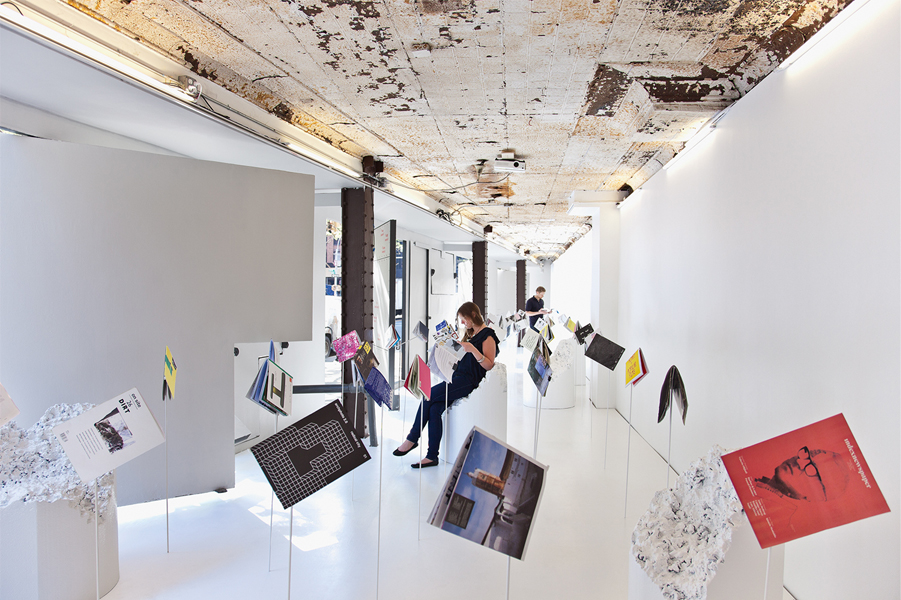Submitted by WA Contents
It’s time.
United Kingdom Architecture News - Oct 22, 2014 - 10:29 5258 views

You can’t escape from words.Image courtesy:Michael Holt
No time to read, write or discuss architecture? No room for theories, books or magazines in the contemporary profession? AR thinks there’s no more an appropriate time to critically discuss architecture than now. Get involved.
Text: Michael Holt
What’s the use of words? How can we find the time to read, write or discuss? There’s no room for theories, books or magazines in the contemporary profession? Right? It is AR’s perspective that there may be no more an appropriate time to critically discuss architecture than now. To open up discussions to a broader range of practitioners and to enable new and old voices to express their interests, opinions, arguments or positions. To use a well-known phrase (and a particularly prescient one): ‘it’s time’.

Archizines at Storefront for Art and Architecture, New York, 2012. Photo credit: Naho Kubota
This article outlines how AR operates and why. What I would like to explain, here, is why AR chooses to label each issue with a single word and is not tied to type or loosely framed architectural subjects. What we advocate for is the advancement of critical discourse and the insistence on the expert role of the architect; we want to suggest that as practitioners we should discuss built work in terms of ideas and not the extraneous factors that the brief demands. We want the practice of architecture to produce buildings as manifestoes.
Words used previously are oblique in their link to architecture (pawn, present, contrasts, authority, elements, super-, margins), but precisely in their vagueness comes the opportunity for investigation. They are all umbrella terms that facilitate discussions in relation to, and reliant on, the word. The most recent example is ‘margins’ (AR138–Margins), whose features focus on profit margins and Modernism in marginalia to contemporary practice. The term is broad enough to create conversation and focused enough to direct it.....Continue Reading
> via Australian Design Review
